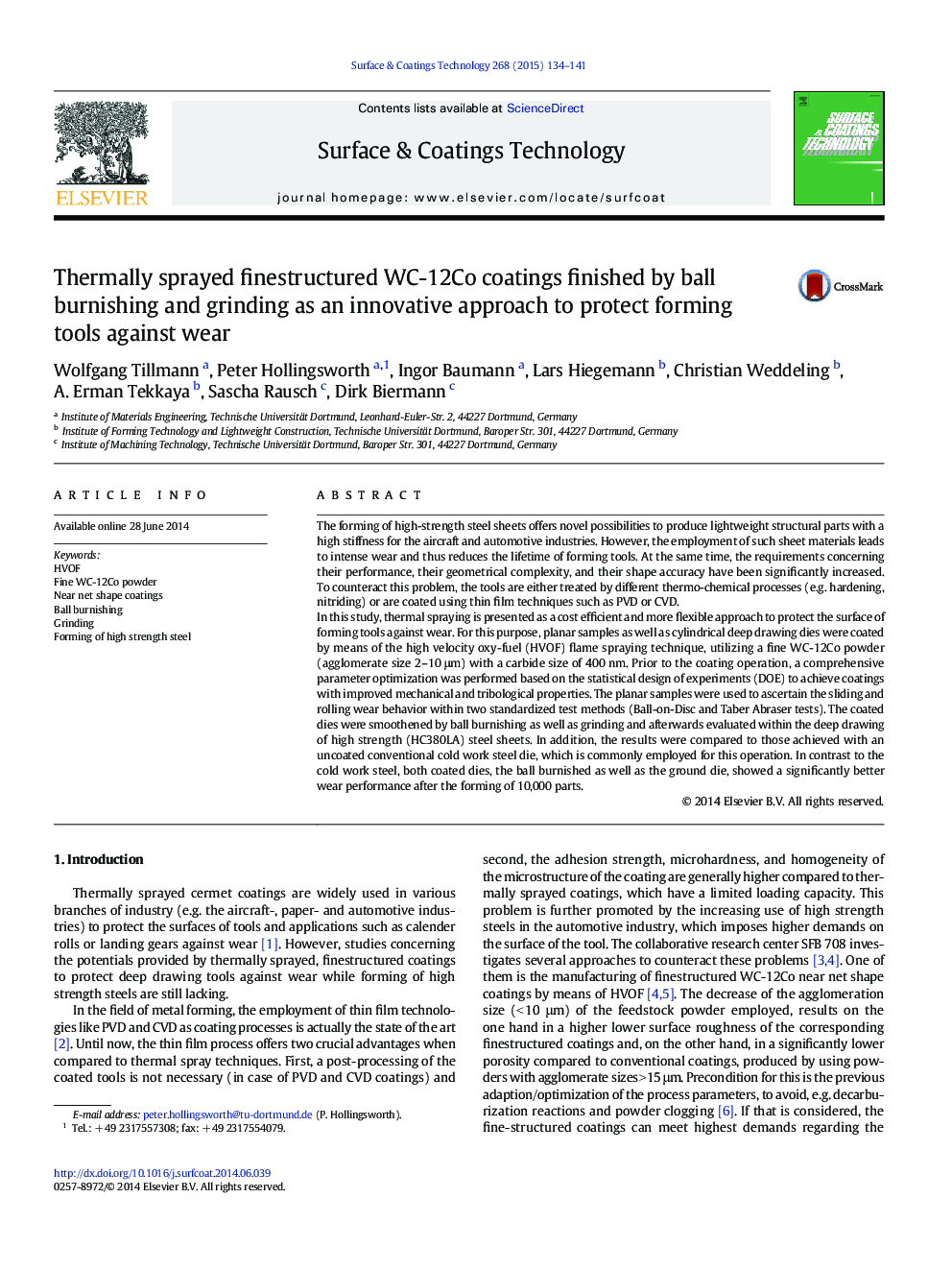| Article ID | Journal | Published Year | Pages | File Type |
|---|---|---|---|---|
| 1657087 | Surface and Coatings Technology | 2015 | 8 Pages |
•WC-12Co coatings are a useful technological solution to protect forming tools against wear.•Statistical DOE was successfully used to optimize the thermal spray parameters.•The coated tool surfaces were post-processed by ball burnishing as well as grinding.•10,000 high-strength steel cups were formed using the coated tool.•The sprayed and post-processed coatings have shown just minor indications of wear.
The forming of high-strength steel sheets offers novel possibilities to produce lightweight structural parts with a high stiffness for the aircraft and automotive industries. However, the employment of such sheet materials leads to intense wear and thus reduces the lifetime of forming tools. At the same time, the requirements concerning their performance, their geometrical complexity, and their shape accuracy have been significantly increased. To counteract this problem, the tools are either treated by different thermo-chemical processes (e.g. hardening, nitriding) or are coated using thin film techniques such as PVD or CVD.In this study, thermal spraying is presented as a cost efficient and more flexible approach to protect the surface of forming tools against wear. For this purpose, planar samples as well as cylindrical deep drawing dies were coated by means of the high velocity oxy-fuel (HVOF) flame spraying technique, utilizing a fine WC-12Co powder (agglomerate size 2–10 μm) with a carbide size of 400 nm. Prior to the coating operation, a comprehensive parameter optimization was performed based on the statistical design of experiments (DOE) to achieve coatings with improved mechanical and tribological properties. The planar samples were used to ascertain the sliding and rolling wear behavior within two standardized test methods (Ball-on-Disc and Taber Abraser tests). The coated dies were smoothened by ball burnishing as well as grinding and afterwards evaluated within the deep drawing of high strength (HC380LA) steel sheets. In addition, the results were compared to those achieved with an uncoated conventional cold work steel die, which is commonly employed for this operation. In contrast to the cold work steel, both coated dies, the ball burnished as well as the ground die, showed a significantly better wear performance after the forming of 10,000 parts.
